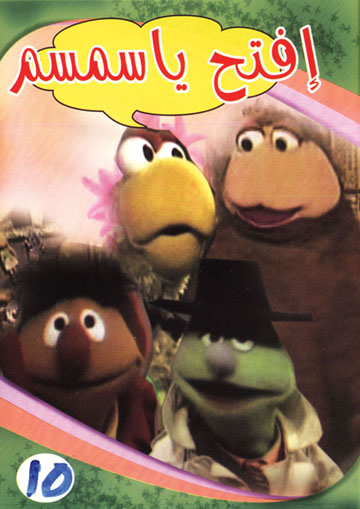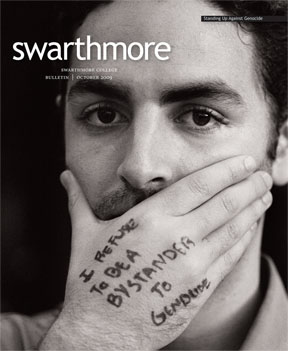Arabic at Swarthmore
Gateway to the Middle East
 Jane Abell ’11 began learning ’ammiyah the moment she landed in Damascus. After all, it was one reason why she came.
Jane Abell ’11 began learning ’ammiyah the moment she landed in Damascus. After all, it was one reason why she came.
“At Swarthmore, we learn fus’ha, or Modern Standard Arabic, the dialect most frequently used in literary texts, media, and academia,” Abell says. Colloquial’ Arabic—’ammiyah—refers to the many different dialects of spoken Arabic in the Middle East. ’Ammiyah is the language most often used in film, music, and daily life.
“If I truly want to learn to speak Arabic,” she continues, “I need to be immersed—to read signs in Arabic, order food in Arabic, to hear Arabic and only Arabic for hours on end.”
Abell has joined the growing ranks of Swarthmore students who broaden their study of Arabic by spending a semester in the Middle East—in Syria, Egypt, Jordan, Morocco, and other countries. Their numbers reflect a burgeoning interest in Arabic language instruction. Introduced in 2006, the program has expanded from a first-year and a small intermediate class to four years of study.
Invigorated since 9/11 and the Iraq War by a personal need to try to comprehend the sources of friction between the West and the Arab World, Abell says, “My interest in Arabic stems from my belief that mutual understanding and appreciation will be the building blocks of a more cooperative and peaceful global society.”
Walid Hamarneh, assistant professor of Arabic, has been instrumental in developing the program. Last year, Hamarneh invited Mahdi Alosh, associate dean for international relations at West Point and former professor of Arabic at Ohio State University, to conduct oral proficiency interviews of 14 randomly-selected first-year students at the end of their second semester. Fully 50 percent “exceeded expectations, showing aspects of advanced-level performance,” Alosh concluded.
Outside the classroom, Arabic is supported by a growing multimedia library (including the only complete collection of Arabic-language Sesame Street DVDs in the United States). Students can watch movies in Arabic, chat with native speakers, and meet weekly in Sharples Dining Hall to hone their language skills over lunch.
Both institutional and individual donors have made Arabic language instruction possible. The program was launched with the help of a $2 million gift from The Andrew W. Mellon Foundation, made in 2005 to the Tri-College Consortium.
In 2006, Swarthmore was awarded a $600,000, four-to-one challenge grant from the National Endowment for the Humanities to create an endowment for the teaching of Arabic. Thanks to significant gifts from alumni and parents, the College met the challenge, raising $2.4 million.
Abell is looking ahead to a graduate degree in Middle Eastern Studies. “My career will undoubtedly require Arabic,” she said, adding “insha’allah”—“if God wills it”—the Arabic phrase Muslims use whenever they plan for the future.
 Email This Page
Email This Page